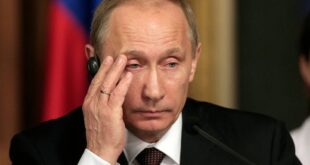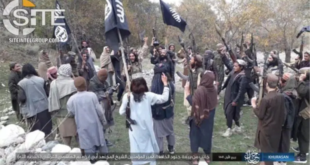ALI MARDAN, Afghanistan, Feb 14 (Reuters) – The foreign warplanes swooped in just as the Afghan village of Ali Mardan was celebrating a wedding.
Bombs slammed into the crowded village square, killing 30 men, women and children. After the smoke cleared and the dead were buried, all the able-bodied men left alive took up arms against the invaders.
That was 1982 and the warplanes belonged to the Soviet Union, but 20 years after the last Soviet soldier left Afghanistan on Sunday, U.S. and NATO troops are all too often making the same mistakes and could run the same risk of being driven out.
A string of bungled U.S. and NATO air strikes killed 455 Afghan civilians last year, according to the United Nations. Wedding parties seem to be particularly at risk, perhaps due to the crowds of people, some of them firing weapons in the air.
U.S. planes bombed two Afghan weddings last year alone.
Memories are long in Afghanistan and revenge is a duty.
In the mud-brick homes of Ali Mardan, close to the Afghan capital Kabul, villagers still visit the graves of those killed in the Soviet bombardment and keep photographs of the dead to remind the living of the cruelty of war.
“I was nine years-old. It was early in the morning during my sister’s wedding when the jets bombed us,” said Abdul Bashir.
“You can see I lost one of my eyes, and my teeth. My brother was wounded. My sister, father and my aunt were martyred,” he said. “I can never forget.”
QUAGMIRE
Soviet leaders were at first reluctant to respond to repeated requests from Kabul’s Marxist government to send troops to help quash resistance from rural Islamic fighters, fearing getting bogged down in Afghanistan, just as the British had in the 19th Century.
But on Dec. 25, 1979, hundreds of Soviet tanks rumbled across the border into northern Afghanistan and large numbers of airborne troops landed at Kabul airport.
Despite deploying up to 120,000 soldiers, supported by 300,000 Afghan government forces, the Soviets failed to crush the insurgency by Afghan mujahideen fighters who were backed by U.S. guns and money and had bases inside neighbouring Pakistan.
Some 15,000 Soviet troops were killed before Moscow decided the war could not be won and pulled out its forces in 1989. By that time, 1 million Afghans had lost their lives and another 5 million become refugees in neighbouring Pakistan and Iran.
The tables are now turned and the United States is considering whether to send another 25,000 troops to add to the nearly 70,000 Western forces locked in a bitter stalemate with Taliban-led insurgents in south and eastern Afghanistan.
“I tell you this for sure, that if NATO and America put all their attention on fighting, and invest only in the military, they will not win,” former mujahideen leader and ex-President Burhanuddin Rabbani told Reuters.
PEACE THOUGH PROGRESS?
President Barack Obama’s new administration is also planning a large increase in spending on development assistance to Afghanistan, more than seven years after the 2001 U.S.-led invasion of one of the poorest countries in the world.
But the Soviets also tried to bring progress to deeply conservative and traditional Afghanistan and in many ways their record was more impressive than that of the West so far.
Most of Afghanistan’s roads, ministries, major schools and hospitals were Soviet-built. Even now, many of the upper echelons of the civil service, army and police are Soviet trained.
The rows of apartment blocks around Kabul were all built by the Soviets. Though many are now shabby and pock-marked with bullet holes from the civil war, they are still highly prized as no public housing has been built since.
“These residential buildings are the achievement of the Russians,” said Abdul Ghani Rahpore, who lives in one of the blocks. “Now there are 40 countries stationed in this country but they haven’t made any achievements that benefit the people.”
But any gains the Soviets made through development and building the Afghan government’s capacity were scuppered by the resentment and anger their devastating bombing raids caused.
That is a lesson U.S. and NATO forces should learn from the experience of their former Cold War adversary.
“I don’t think NATO has fully understood just how serious this issue is,” said a Kabul-based Western analyst. “They certainly have done what they can to try to avoid civilian casualties from air strikes, but I just don’t think they have grasped how central it is to informing the views of the nation.”
Added Rabbani: “There have already been some mistakes during military operations and the mistakes are continually being repeated. This is the same mistake the Soviets made.” (Writing by Jon Hemming; Editing by Dean Yates)
 Eurasia Press & News
Eurasia Press & News



